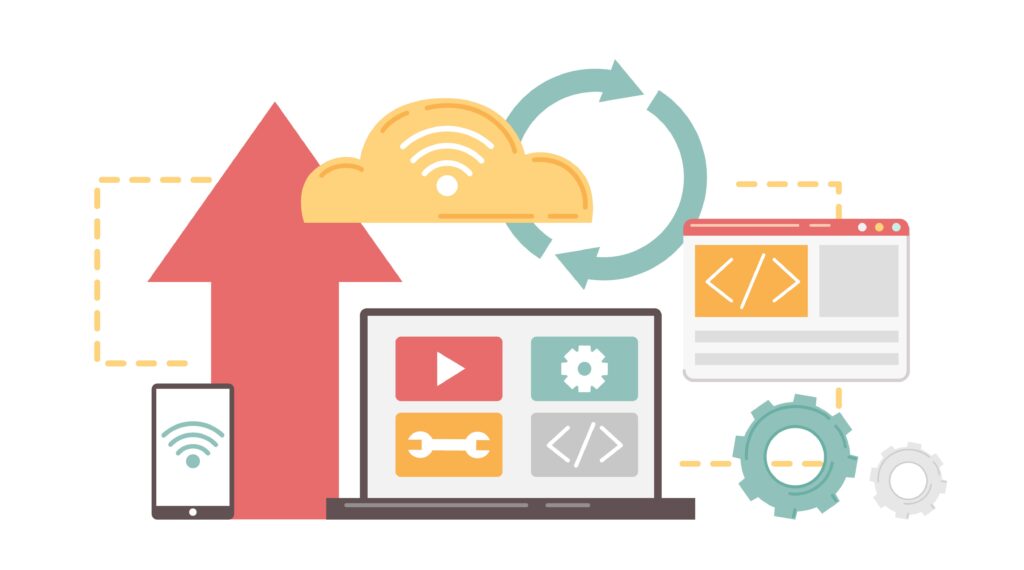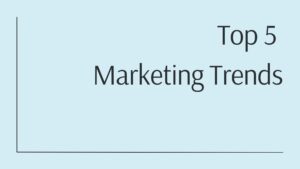Software as a Service (SaaS) has emerged as a game-changer in the software industry, offering businesses a cost-effective and flexible alternative to traditional software distribution models. SaaS applications are designed to be easily accessible from anywhere with an internet connection, but how exactly is SaaS software distributed? In this article, we will explore the distribution mechanisms behind SaaS, shedding light on the processes that make it so versatile and convenient for users and providers alike.
Understanding SaaS Software Distribution
Before diving into the distribution methods, let’s first grasp the essence of SaaS. Software as a Service (SaaS) is a cloud computing model where applications are hosted on remote servers and made accessible to users over the internet. Unlike traditional software, the SaaS platform differs in many areas, where users download and install applications on their local devices, SaaS eliminates the need for such installations. Instead, users can access the software through web browsers, which simplifies the process and reduces the need for manual updates and maintenance.
This cloud-based approach not only streamlines software access but also offers several advantages. It allows for automatic updates and patches, ensuring that users always have access to the latest features and security enhancements without any additional effort. Furthermore, SaaS provides scalability, enabling users to adjust their usage according to their needs without worrying about hardware limitations or over-provisioning. This flexibility enhances user convenience and efficiency, making SaaS a popular choice for businesses and individuals alike. Understanding this model is crucial, as it represents a significant shift in how software is delivered and managed in the cloud landscape.
How are SaaS Software Distributed in the Cloud? – Find all Channels of It
This guide breaks down how businesses deliver and sell software through the internet, known as SaaS (Software as a Service). It starts by explaining what SaaS actually is—instead of buying and installing software on your computer, you pay a subscription to use it through your web browser, like Netflix or Microsoft 365.
The guide explores different ways companies can package and sell their SaaS solution, comparing traditional methods (where you buy and download the program) to the SaaS approach. It highlights why SaaS is becoming more popular: it’s easier to update, usually cheaper to start using, and you can access your work from any device.
Enterprise Distribution for Large Organizations
When SaaS solutions are specifically targeted at enterprises, distribution often occurs through dedicated enterprise app stores or portals. These platforms are designed to curate a selection of SaaS applications that are approved and vetted by the organization. If you work in a large company, this means that the software you have access to is carefully selected to meet your organization’s needs, ensuring compatibility, security, and compliance.
This method of distribution also allows IT departments to maintain control over software usage, manage licenses effectively, and enforce security policies. As an employee, you benefit from having access to the tools you need without having to worry about software installation or updates—everything is handled behind the scenes by your IT team.
Partner Reselling for Extending the Network
SaaS providers often collaborate with other companies, such as value-added resellers (VARs) or system integrators, to distribute their software. These partners can offer the SaaS solution as part of a larger package or bundle it with other complementary services. This distribution method extends the reach of the SaaS provider by leveraging the partner’s existing customer base and industry expertise.
From your perspective, purchasing software through a partner can be advantageous because it often comes with added value—whether it’s additional support, customized solutions, or integration with other systems. This collaborative approach not only enhances the distribution network but also ensures that you receive a tailored solution that fits seamlessly into your existing workflow.
Free Trials and Freemium Models to Try Before You Buy
To attract new users, SaaS providers frequently offer free trials or freemium versions of their software. You’ve likely encountered this model before—perhaps you’ve signed up for a free trial of a productivity tool or used a freemium version of a popular app. Free trials allow you to explore the full range of features for a limited time, giving you a hands-on experience before committing to a purchase. Freemium models, on the other hand, provide a basic version of the software for free, with the option to upgrade to a premium version that unlocks advanced features.
These distribution strategies are excellent for user acquisition and retention. By allowing you to test the software without any financial commitment, SaaS providers can build trust and demonstrate value. If the software meets your needs, you’re more likely to convert to a paying customer, ensuring a steady stream of revenue for the provider while offering you a solution that genuinely enhances your productivity.
Direct Web Access as a Simplest Path
The most common and straightforward method of distributing SaaS software is through direct web access. Imagine you need to use an application—no more searching for installation files or worrying about system compatibility. Instead, you simply navigate to a specific URL, log in with your credentials, and start using the software right away. This method is highly convenient, as it requires no installation or downloads. Plus, updates are managed automatically by the SaaS provider, ensuring that you’re always using the latest version.
This approach not only simplifies your experience but also ensures that the software is accessible from any device with an internet connection. Whether you’re at your desk, on your tablet, or using your smartphone, direct web access gives you the flexibility to work wherever you are. Popular examples of SaaS applications distributed this way include Google Workspace, Microsoft 365, and Salesforce, all of which have become indispensable tools in both business and personal settings.
App Marketplaces for a Wider Reach
Another major distribution channel for SaaS software is app marketplaces. You’re probably familiar with the Apple App Store or Google Play Store, but did you know there are also cloud marketplaces like AWS Marketplace? These platforms serve as hubs where you can discover, purchase, and install SaaS applications directly.
For you as a user, this means easy access to a wide variety of applications tailored to your needs. You can browse different categories, read reviews, and make informed decisions about the software that best suits your requirements. For SaaS providers, being listed on these marketplaces offers exposure to a broader audience and provides an additional revenue stream. It’s a win-win scenario that simplifies the purchasing process while extending the reach of the software to users across the globe.
Custom Integrations for Seamless Workflow
In some cases, SaaS software is distributed through custom integrations with other software systems. For instance, if you’re using a SaaS accounting application, it might integrate with your company’s existing ERP system, allowing you to access it within your familiar workflow. These custom integrations enhance the value proposition of SaaS solutions by offering seamless interoperability with other tools you use daily.
For businesses, this means reduced friction when adopting new software. Instead of learning a completely new system from scratch, you can benefit from the new functionality while continuing to use the tools you’re already comfortable with. This approach not only improves efficiency but also reduces the learning curve, making it easier to onboard employees and maximize the software’s potential.
APIs for Developers to Empower Custom Solutions
SaaS providers often offer Application Programming Interfaces (APIs) that allow developers to integrate their software into other applications or build custom solutions on top of the SaaS platform. This method of distribution is particularly valuable for businesses looking to create tailored solutions that meet specific needs.
As a developer, APIs empower you to extend the functionality of the SaaS application, enabling you to build custom workflows, automate tasks, or even create entirely new applications that leverage the core features of the SaaS platform. This level of flexibility makes SaaS an attractive option for businesses of all sizes, as it allows for customization and innovation without the need to build everything from scratch.
Multi-Regional Deployment for Global Reach with Local Performance
One of the often overlooked aspects of SaaS distribution is the importance of multi-regional deployment. When you’re using a SaaS application, you expect it to perform consistently, regardless of your geographic location. To achieve this, SaaS providers deploy their applications across multiple data centers around the world.
This distribution strategy ensures that you experience low latency and high availability, no matter where you are. For instance, if you’re in the United States, your data might be served from a nearby data center, reducing load times and improving performance. The multi-region deployment also enhances redundancy and disaster recovery, ensuring that the application remains accessible even if one region experiences an outage.
Subscription Management Platforms for Simplifying SaaS Purchases
Managing multiple SaaS subscriptions can be a challenge, especially for businesses with a large number of users. Subscription management platforms simplify this process by offering a centralized hub where you can manage, monitor, and optimize all your SaaS subscriptions.
These platforms allow you to track usage, manage renewals, and even consolidate billing, making it easier to control costs and ensure that you’re getting the most value from your SaaS investments. For businesses, this means greater transparency and control over software spending, while for SaaS providers, it offers a streamlined way to manage customer relationships and reduce churn.
Security and Compliance Distribution for Trust in the Cloud
Security and compliance are critical considerations when distributing SaaS software. As a user, you need to trust that the SaaS provider is handling your data securely and in compliance with relevant regulations. SaaS providers address these concerns through robust security measures, including encryption, multi-factor authentication, and regular security audits.
Additionally, many SaaS providers obtain certifications such as ISO 27001 or SOC 2, which demonstrate their commitment to security and compliance. These certifications are often a key part of the distribution strategy, as they provide reassurance to potential customers that their data will be handled with the utmost care. For you, this means peace of mind knowing that your sensitive information is protected while you focus on leveraging the software to achieve your goals.
Conclusion: The Evolution of SaaS Distribution
The distribution of SaaS software is a multifaceted process, designed to offer you accessibility, flexibility, and convenience. Whether it’s through direct web access, app marketplaces, enterprise distribution, partner reselling, free trials, custom integrations, APIs for developers, multi-region deployment, subscription management platforms, or robust security and compliance measures, SaaS providers employ a wide range of strategies to reach and cater to their target audiences.
This versatility is one of the key reasons behind the rapid adoption of SaaS solutions across businesses of all sizes. As SaaS continues to evolve, so too will the distribution methods, ensuring that you have access to the most innovative, secure, and effective software available. Understanding these distribution mechanisms not only enhances your appreciation of SaaS but also empowers you to make informed decisions about the tools you choose to incorporate into your workflow.






3 thoughts on “How is SaaS Software Distributed? Knowing Cloud-Based Delivery Model”
I truly believe that your article is one of the most insightful pieces I have come across, aligning perfectly with my current understanding and interests. It has left me eager for more, particularly in the realm of SaaS.
I found your perspective on SaaS software really captivating and thought-provoking. Your insights into how these tools can impact businesses and individuals made me think about the topic in a new light. I appreciate the time you took to share your thoughts. I have a question that I would love to get your opinion on.
Thanks, interesting points! However, I’d love to see more about the challenges SaaS companies face with these cloud-based deliveries.